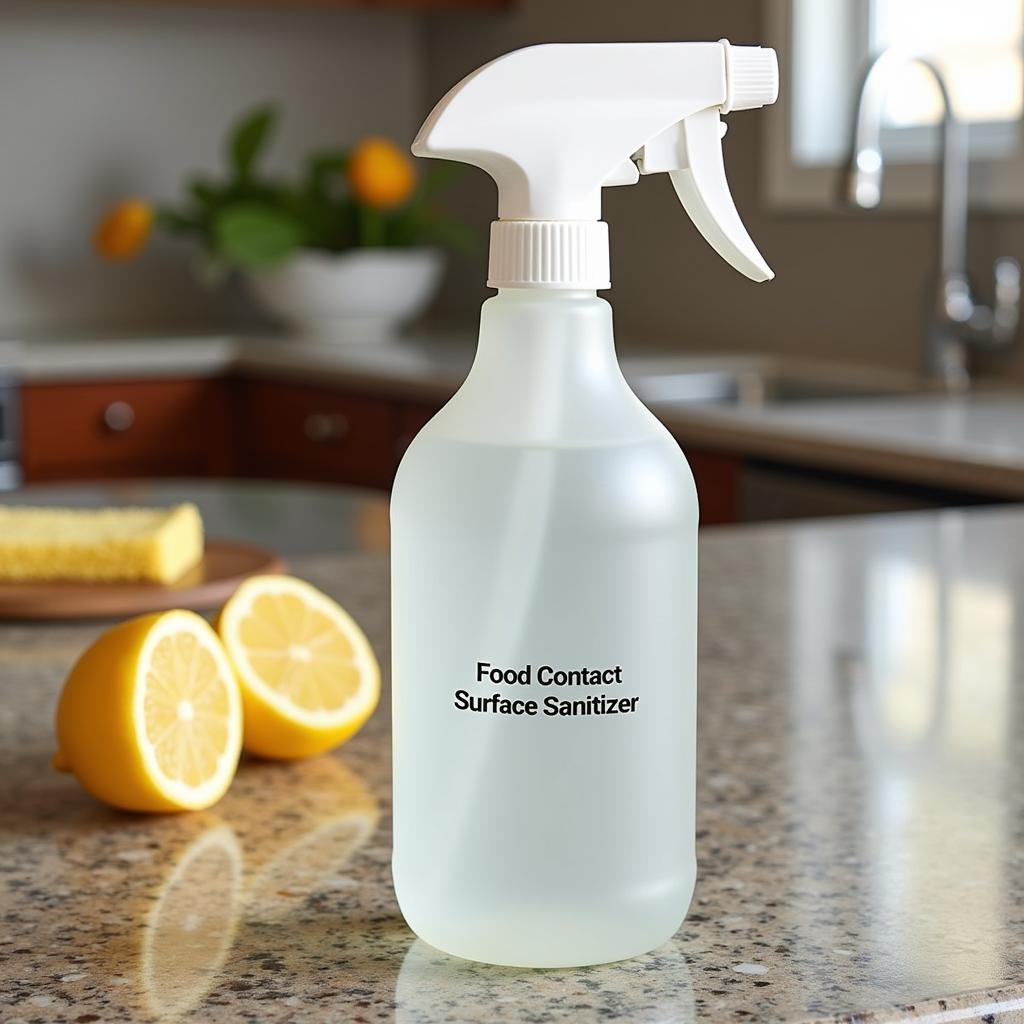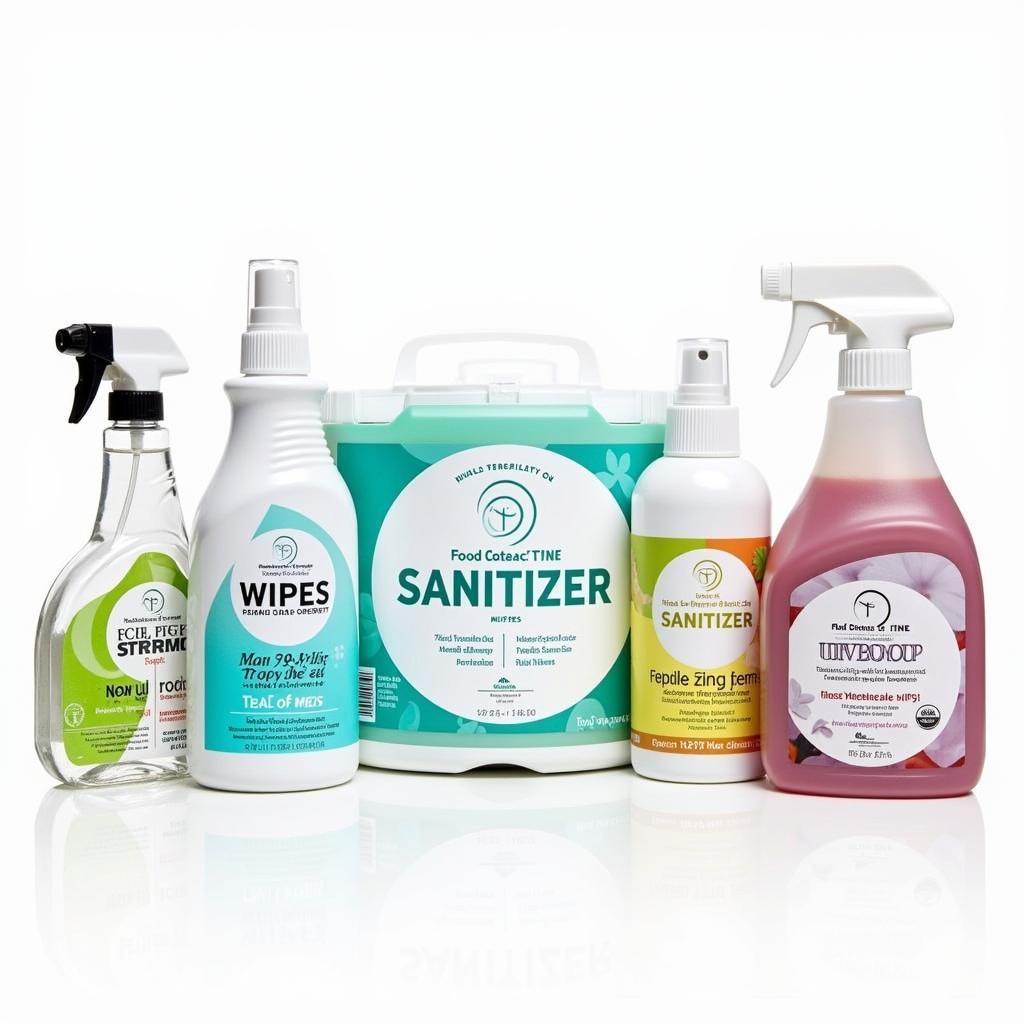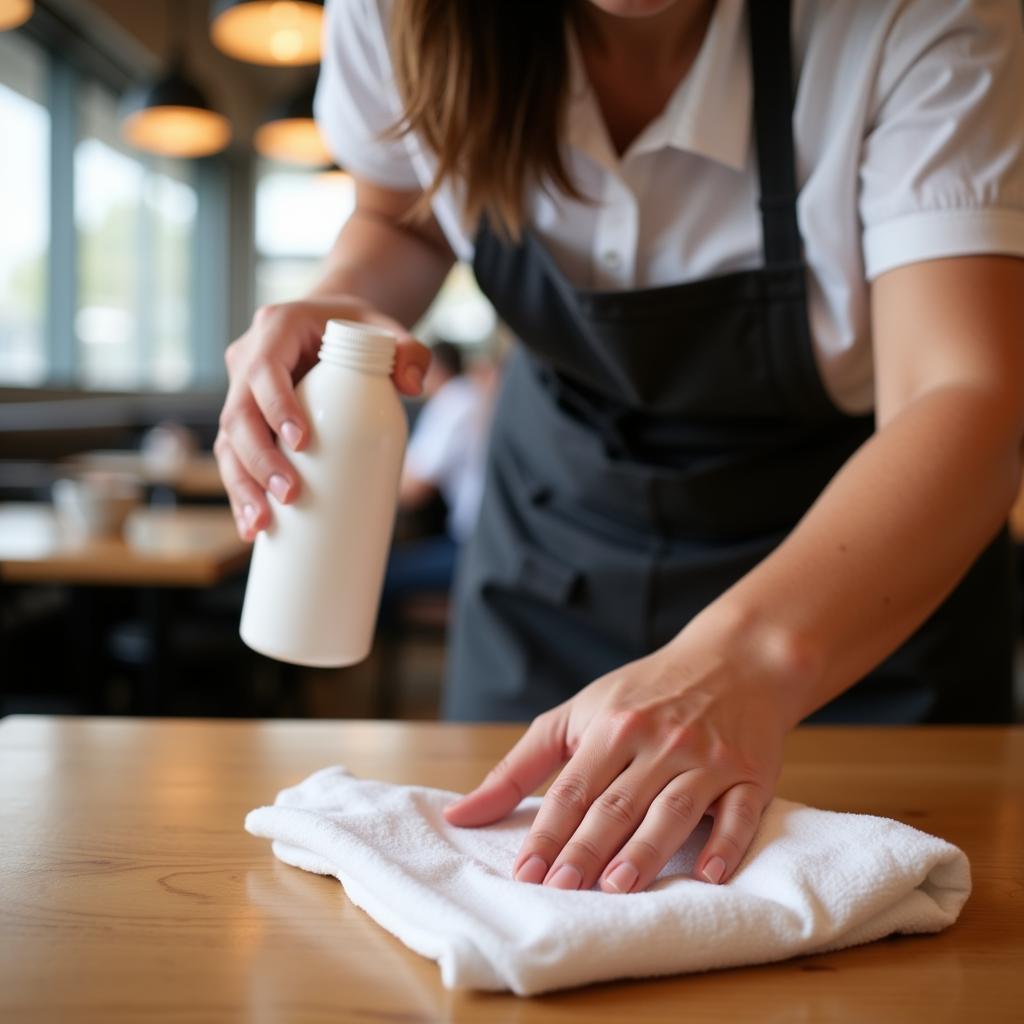Food Contact Surface Sanitizer is an essential tool for ensuring food safety in any environment where food is prepared, stored, or served. Whether you’re a seasoned chef or a home cook, understanding the importance of these sanitizers and how to use them correctly can significantly reduce the risk of foodborne illnesses.
 Spray bottle of food contact surface sanitizer on a kitchen counter
Spray bottle of food contact surface sanitizer on a kitchen counter
Why Use a Food Contact Surface Sanitizer?
Food contact surfaces, such as cutting boards, countertops, and utensils, can harbor harmful bacteria that lead to food poisoning. These surfaces are constantly exposed to various ingredients and can easily become breeding grounds for unseen microorganisms. Simply washing with soap and water isn’t enough to eliminate these threats entirely. This is where a food contact surface sanitizer plays a crucial role.
How Does Food Contact Surface Sanitizer Work?
These sanitizers are specially formulated to kill a broad spectrum of bacteria, viruses, and fungi. They work by disrupting the cell walls of microorganisms, effectively destroying them and preventing their further growth.
 Various forms of food contact surface sanitizers
Various forms of food contact surface sanitizers
Choosing the Right Food Contact Surface Sanitizer
When choosing a sanitizer, look for products that are specifically labeled as “food contact surface sanitizer” or state that they meet the requirements of the relevant food safety regulations in your region.
Using Food Contact Surface Sanitizer Effectively
For optimal results, follow these simple steps:
- Clean: Before sanitizing, thoroughly clean the surface with soap and water to remove visible dirt and grime.
- Apply: Follow the manufacturer’s instructions for application. Some sanitizers require dilution, while others are ready to use.
- Contact Time: Allow the sanitizer to sit on the surface for the recommended contact time. This is crucial for the sanitizer to effectively kill the microorganisms.
- Air Dry: Let the surface air dry. Rinsing might remove the sanitizer before it has completed its job.
Common Food Contact Surface Sanitizer Ingredients
Most food contact surface sanitizers use one or a combination of these active ingredients:
- Chlorine: A powerful disinfectant commonly used in bleach.
- Quaternary Ammonium Compounds (Quats): Effective against a wide range of microorganisms.
- Hydrogen Peroxide: Breaks down into water and oxygen, leaving no residue.
Benefits of Using Food Contact Surface Sanitizer
“Investing in a high-quality food contact surface sanitizer is crucial for maintaining a safe and healthy food preparation environment,” says renowned food safety expert Dr. Sarah Jones. “It’s a simple yet highly effective step that significantly minimizes the risk of foodborne illnesses.”
 Cleaning a table with a food safe sanitizing wipe
Cleaning a table with a food safe sanitizing wipe
Implementing a robust sanitation protocol using food contact surface sanitizers offers numerous benefits:
- Reduced Risk of Foodborne Illness: The primary benefit is the significant reduction in the risk of food poisoning outbreaks.
- Enhanced Food Safety: Creates a safer and healthier environment for food preparation, handling, and consumption.
- Improved Compliance: Using approved sanitizers helps businesses comply with food safety regulations and avoid potential penalties.
- Peace of Mind: Provides peace of mind knowing that you’re taking proactive steps to protect yourself, your family, and your customers.
Food Contact Surface Sanitizer: A Must-Have for Every Kitchen
Investing in a food contact surface sanitizer is a small price to pay for the peace of mind and health benefits it provides. By incorporating this essential tool into your food safety routine, you can create a cleaner, safer, and healthier environment for everyone.
FAQ
1. Can I use any household cleaner as a food contact surface sanitizer?
No, not all household cleaners are formulated to sanitize food contact surfaces. Use only products specifically labeled for this purpose.
2. How often should I sanitize food contact surfaces?
It’s recommended to sanitize food contact surfaces after each use and especially after handling raw meat, poultry, or eggs.
3. Can I use a food contact surface sanitizer on my hands?
No, these sanitizers are designed for surfaces and may be harsh on skin. Use hand soap and water or a hand sanitizer specifically formulated for hands.
4. Are food contact surface sanitizers safe for children and pets?
Always store sanitizers out of reach of children and pets. Choose products with clear safety instructions and follow them carefully.
5. What should I do if I accidentally ingest a food contact surface sanitizer?
Contact your local poison control center or seek medical attention immediately.
Need Help?
For assistance with any food safety needs, contact Mina Cones Food at Phone Number: 02437655121, Email: [email protected], or visit us at 3PGH+8R9, ĐT70A, thôn Trung, Bắc Từ Liêm, Hà Nội, Việt Nam. Our dedicated customer support team is available 24/7 to answer your questions.
We also offer a range of products to help you maintain a safe and hygienic food environment, including:
Explore our website further for more information on food camp and meat food processing equipment.